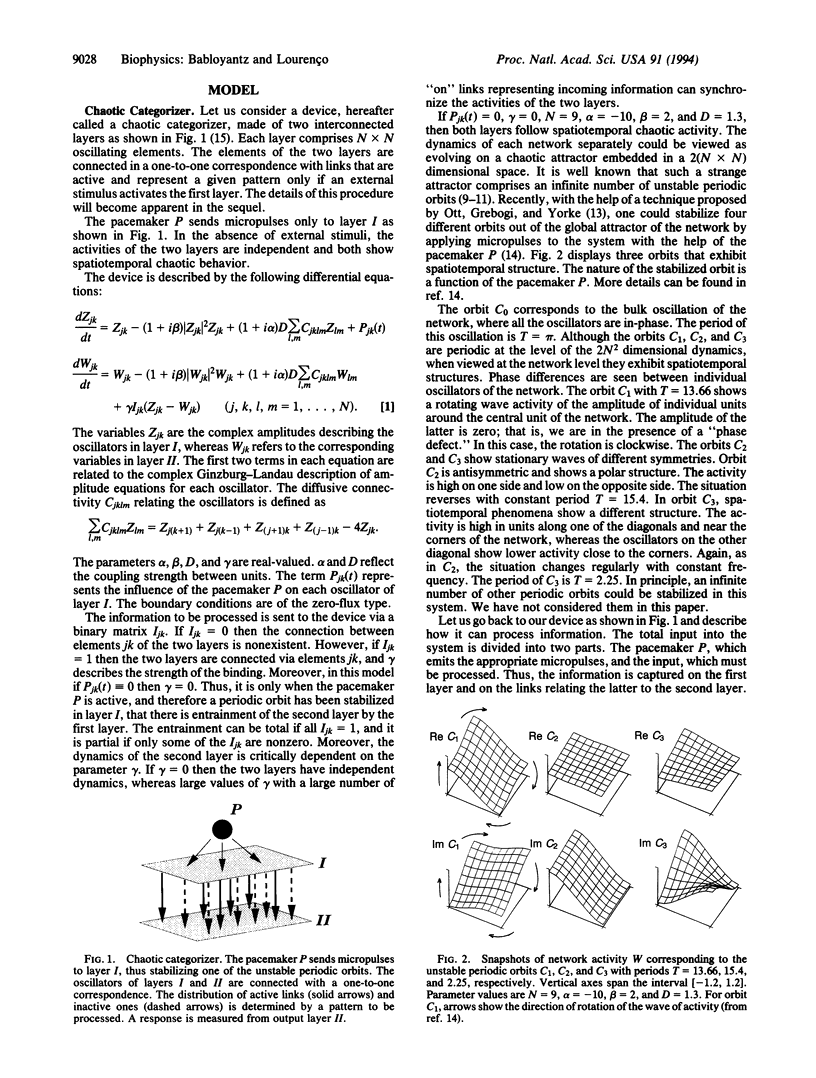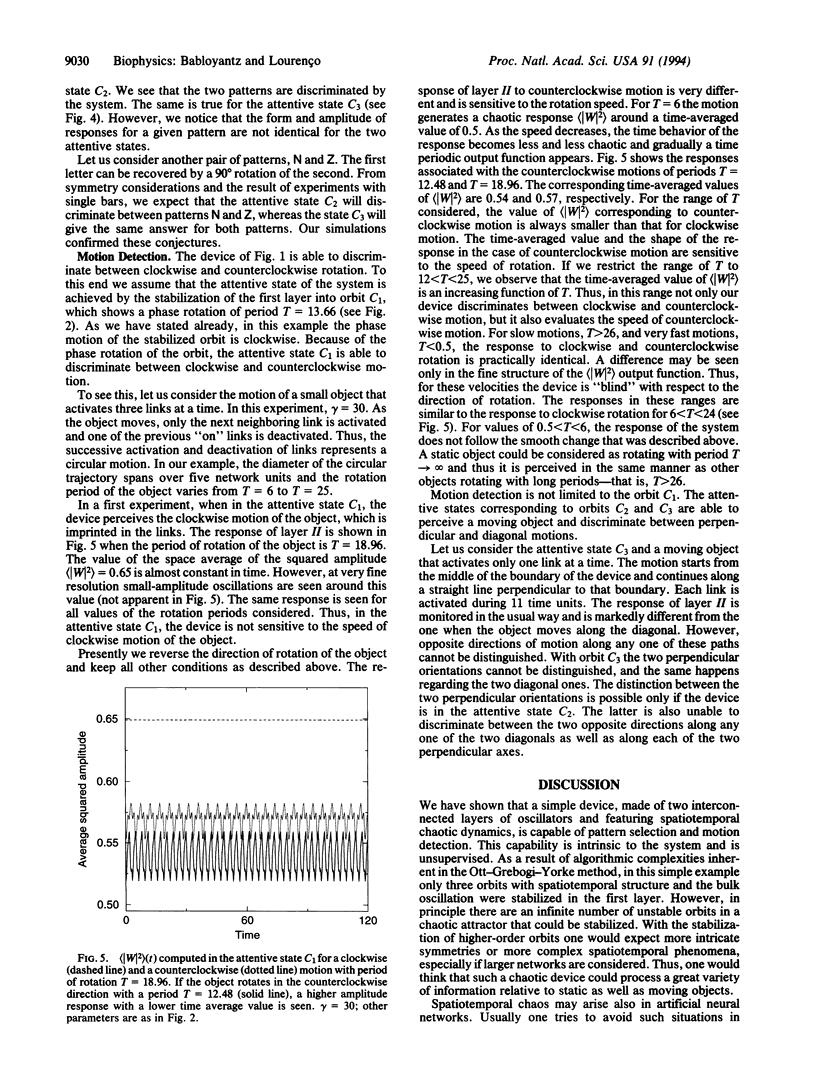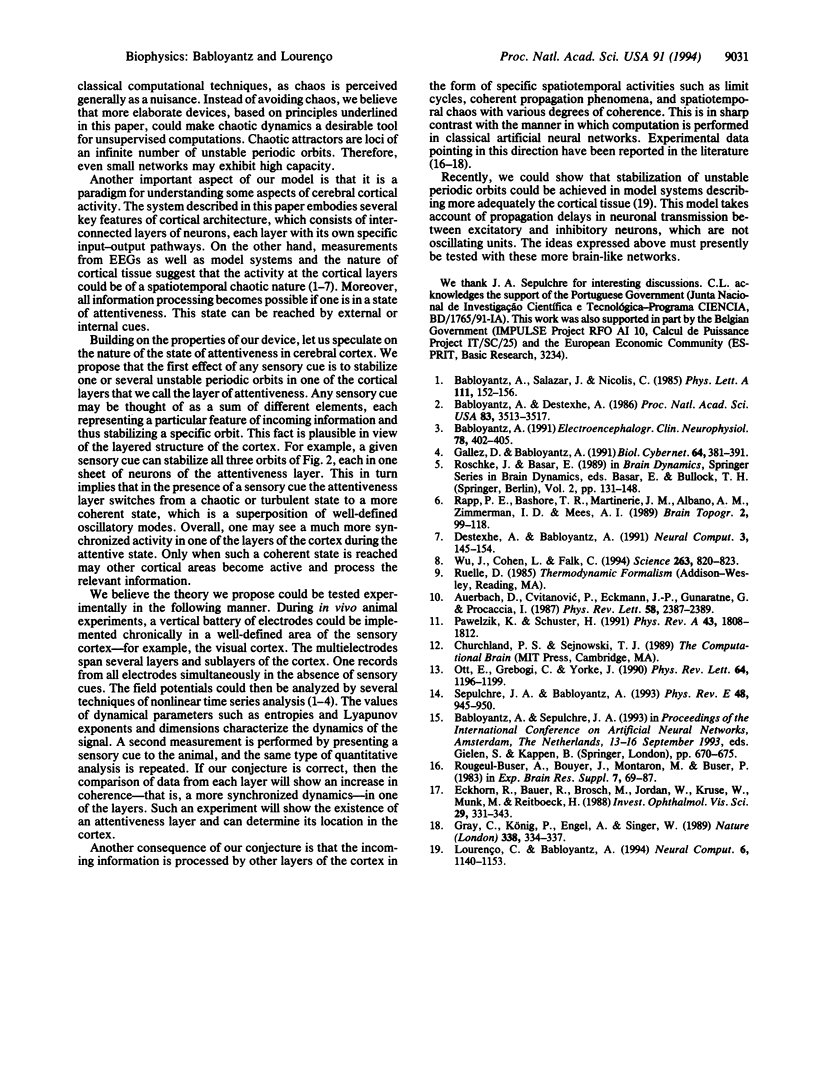Abstract
A device comprising two interconnected networks of oscillators exhibiting spatiotemporal chaos is considered. An external cue stabilizes input specific unstable periodic orbits of the first network, thus creating an "attentive" state. Only in this state is the device able to perform pattern discrimination and motion detection. We discuss the relevance of the procedure to the information processing of the brain.
Full text
PDF




Images in this article
Selected References
These references are in PubMed. This may not be the complete list of references from this article.
- Auerbach D, Cvitanovic P, Eckmann JP, Gunaratne G, Procaccia I., I Exploring chaotic motion through periodic orbits. Phys Rev Lett. 1987 Jun 8;58(23):2387–2389. doi: 10.1103/PhysRevLett.58.2387. [DOI] [PubMed] [Google Scholar]
- Babloyantz A., Destexhe A. Low-dimensional chaos in an instance of epilepsy. Proc Natl Acad Sci U S A. 1986 May;83(10):3513–3517. doi: 10.1073/pnas.83.10.3513. [DOI] [PMC free article] [PubMed] [Google Scholar]
- Babloyantz A. Evidence for slow brain waves: a dynamical approach. Electroencephalogr Clin Neurophysiol. 1991 May;78(5):402–405. doi: 10.1016/0013-4694(91)90101-9. [DOI] [PubMed] [Google Scholar]
- Gallez D., Babloyantz A. Predictability of human EEG: a dynamical approach. Biol Cybern. 1991;64(5):381–391. doi: 10.1007/BF00224705. [DOI] [PubMed] [Google Scholar]
- Gray C. M., König P., Engel A. K., Singer W. Oscillatory responses in cat visual cortex exhibit inter-columnar synchronization which reflects global stimulus properties. Nature. 1989 Mar 23;338(6213):334–337. doi: 10.1038/338334a0. [DOI] [PubMed] [Google Scholar]
- Ott E, Grebogi C, Yorke JA. Controlling chaos. Phys Rev Lett. 1990 Mar 12;64(11):1196–1199. doi: 10.1103/PhysRevLett.64.1196. [DOI] [PubMed] [Google Scholar]
- Pawelzik K, Schuster HG. Unstable periodic orbits and prediction. Phys Rev A. 1991 Feb 15;43(4):1808–1812. doi: 10.1103/physreva.43.1808. [DOI] [PubMed] [Google Scholar]
- Rapp P. E., Bashore T. R., Martinerie J. M., Albano A. M., Zimmerman I. D., Mees A. I. Dynamics of brain electrical activity. Brain Topogr. 1989 Fall-Winter;2(1-2):99–118. doi: 10.1007/BF01128848. [DOI] [PubMed] [Google Scholar]
- Sepulchre JA, Babloyantz A. Controlling chaos in a network of oscillators. Phys Rev E Stat Phys Plasmas Fluids Relat Interdiscip Topics. 1993 Aug;48(2):945–950. doi: 10.1103/physreve.48.945. [DOI] [PubMed] [Google Scholar]
- Wu J. Y., Cohen L. B., Falk C. X. Neuronal activity during different behaviors in Aplysia: a distributed organization? Science. 1994 Feb 11;263(5148):820–823. doi: 10.1126/science.8303300. [DOI] [PubMed] [Google Scholar]



